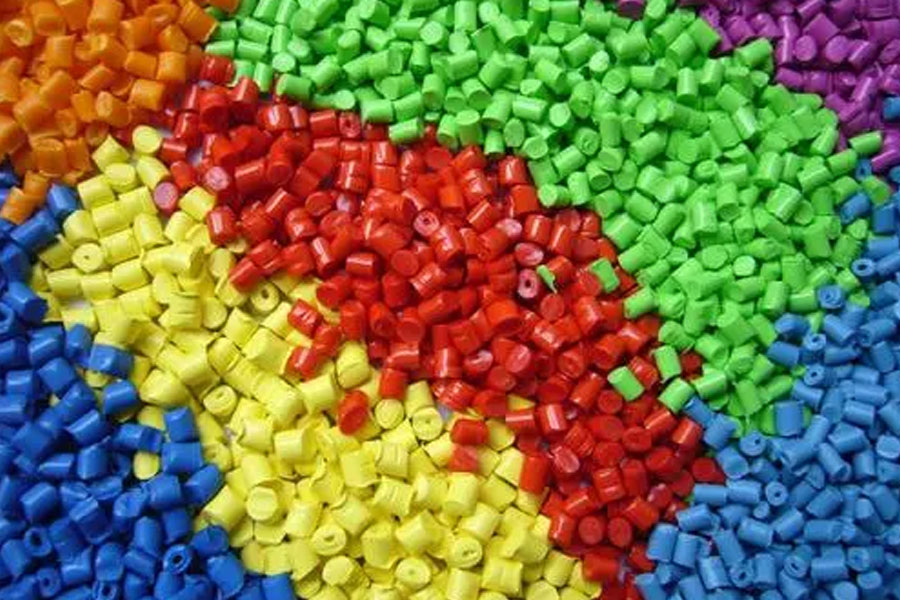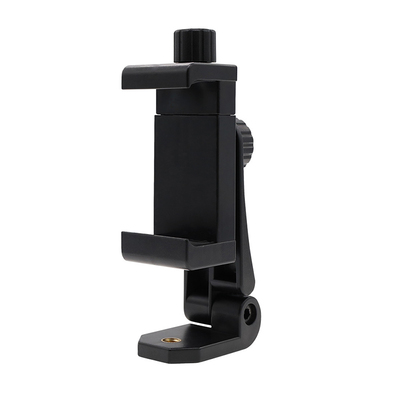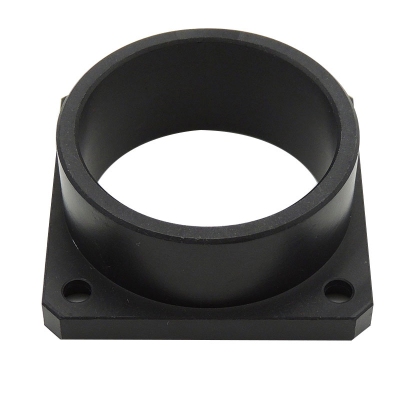List Of General-Purpose Plastics, Engineering Plastics And Special Plastics Commonly Used In Automobiles
There are many types of plastics, and their applications in automobiles are divided into interior parts, exterior parts and functional parts. According to the different use characteristics of famous plastics, plastics are usually divided into three types: general plastics, engineering plastics and special plastics.

01.General Plastic
generally refers to plastics with large production volume, good formability, low price, and widely used. General-purpose plastics include five major varieties, polypropylene (PP), polyethylene (PE), polyvinyl chloride (PVC), polystyrene (PS), acrylonitrile-butadiene-styrene copolymer (ABS), all of which are thermoplastic plastic.
1. PP
Polypropylene, commonly known as pleated rubber, is similar to white wax, transparent, light weight, good fluidity during injection molding, and water absorption is less than 0.02%. The shrinkage rate of PP is 1.0-3.5%, and the suitable thickness is 1.5-2.5mm.
There are two main problems in the widespread use of PP in the automotive field: flammability (it will drip burnt) and brittleness in low-temperature environments. In response to these two problems, suitable additives are added in the practical industrial application to make PP modification. Inflammable, flame retardant will be added; it is brittle in low temperature environment, mainly by adding other tough materials, rigid particles or elastomers for various modification and toughening, such as rubber (EPDM), talcum powder (TD), glass fiber (GF )Wait. There are many automotive products made of PP resin, including various instrument panels, door guards, column guards, bumpers, water tanks, and decorative panels. The application of PP in automobiles has an increasing trend.
2.PE
Polyethylene, one of the lightest plastics, translucent white wax-like material, good water resistance, acid and alkali resistance, organic solvent resistance, and excellent electrical insulation. The shrinkage rate is 1.5-4.0%, and the appropriate thickness is 1.0-2.5mm.
The biggest disadvantage of PE as an automotive material is that it is easy to burn. The simplest and commonly used method is to add a suitable flame retardant to improve the burning performance of PE. Automobile products made of PE mainly include fuel tank, air duct, front seat trim cover, air duct assembly (HDPE), left and right air duct assembly, upper and lower wind direction blade connecting bar, left and right foot vent assembly, etc.
3. PVC
Polyvinyl chloride, commonly used PVC is a multi-component plastic, because the content of each component is different, a variety of different hardness PVC particles with very different mechanical properties are formed, generally divided into two categories: soft PVC and hard PVC. Shrinkage rate: hard PVC is 1-1.5%, soft PVC is 2-2.3%, suitable thickness is 2-3.5mm.
The most commonly used plastic raw material in automotive plastic products is polyvinyl chloride, and automotive plastic products made of PVC plastic can be seen everywhere, such as PVC dashboard skins, PVC plastic steering wheels, PVC plastic linings, and PVC plastic car floor materials. This is not only because the price of PVC resin is economical, but also the processing performance and comprehensive mechanical properties are relatively good.
4.PS
Polystyrene, commonly known as hard rubber, is a transparent glass-like material that has good fluidity and does not absorb water. Due to the brittleness of PS, it is often grafted and copolymerized with other substances. For example, it is grafted and copolymerized with butadiene to form HIPS. After containing rubber, the impact strength and surface hardness are greatly improved. Shrinkage rate is 0.4-0.7%, suitable thickness is 2-3mm.
PS is mainly used in the car's instrument housing, lampshade, and lighting products. Polystyrene can also be used to prepare packaging materials and thermal insulation materials through foam molding, used to produce ceilings, and graft copolymerization and modification with other materials to obtain many fixed and matched PS family alloy plastic varieties, such as SMA In the manufacture of car dashboard skeletons.
5.ABS
Acrylonitrile-butadiene-styrene copolymer, commonly known as super non-breaking glue, the body is white. The shrinkage rate is 0.4-0.7%, and the appropriate wall thickness is 1.8-3mm.
Because of the variety of ABS, the surface treatment effect is good, and the price is low, it is widely used in the automotive field. In view of the poor weather resistance of ABS, high weather resistance AES, ASA and other materials have been widely used to supplement ABS in commercial vehicles. When the product needs surface treatment (such as water transfer film, spraying), use ABS; when surface treatment is not required, use ASA, AES. The most typical automotive products are decorative bright strips, shift handle heads, inner opening handles, license plate decorations, rear spoiler assembly, rearview mirror body, radiator grille body, armrests, etc.
02.Engineering Plastics
Engineering plastics are also widely used in the automotive field due to their good comprehensive mechanical properties. This article mainly introduces polyamide (PA), polymethacrylate (PMMA), polyoxymethylene (POM), polyamide (PU) ), polycarbonate (PC).
1.PA
Polyamide, commonly known as nylon, there are many types of PA in industrial use, and PA6, PA66 and PA610 are commonly used. Due to the influence of thermal expansion and water absorption, the dimensional stability of the parts is poor, and the shrinkage rate is 1-2%. It is necessary to pay attention to the dimensional change of moisture absorption after molding. The water absorption rate is 100%, and it can absorb 8% when the relative moisture absorption is saturated, and the appropriate wall thickness: 2-3.5mm.
PA is mainly used in the automotive field to manufacture hoses (brake hoses, fuel pipes), combustion oil filters, air filters, oil filters, water pump housings, water pump impellers, fans, brake fluid tanks, power steering fluid tanks , White leaf windows, headlight shells, seat belts.
2. PMMA
Polymethacrylate, commonly known as plexiglass, is resistant to outdoor aging, has excellent light transmittance, suitable plastic products: transparent structural parts with certain strength requirements.
PMMA is widely used in automobile lighting signs, door glass and lamp glass cover due to its good light transmission performance.
3. POM
POM, commonly known as plastic steel, shrinkage rate of 2-3.5%, suitable wall thickness: 1.5-2.5mm.
POM is used in automobiles to manufacture instrument panel glove box accessories, various valves (drain valves, air conditioner valves, etc.), various impellers (water pump impeller, heater impeller, oil pump wheel, etc.), various electrical switches and electrical meters The pinion, various handles and door pins, etc.
4. PC
Polycarbonate has outstanding impact toughness and creep resistance, good heat resistance and cold resistance. The shrinkage rate is 0.5-0.7%, and the suitable wall thickness is 2-3.5mm. The addition of glass fiber to PC can improve its shrinkage, mechanical strength and temperature resistance. Long-term use at around 100°C will increase its rigidity. Annealing can be used to improve internal stress.
Introduction to the main composite PC-ABS:
PC-ABS is a blended material of PC and ABS. It is usually supplied in pellet form after blending. If the two materials are simply mixed and then injected directly, the effect is very poor, and delamination will occur; the advantage of PC is rigid and tough, but the disadvantage is stress cracking and high viscosity; the advantage of ABS is that it has good fluidity, but the surface Low hardness; the blended material PC-ABS retains the advantages of both; PC-ABS has higher surface hardness, higher rigidity and toughness, and higher resistance to stress cracking; its mechanical properties Somewhere in between.
PC is mainly used in the automotive field to manufacture lampshades, left and right wheel guards, instrument baffle bodies (PC+ABS), left and right wind frame covers, middle wind frame covers (PC+ABS), and rear bumper cushions.
5.PU
Polyurethane, according to the different polymerization reaction products, commonly used is divided into rigid polyurethane and soft polyurethane.
Polyurethane foam is widely used in automotive interiors and vibration-absorbing parts, such as coating materials, polyurethane rigid plastic sheets, polyurethane elastomers, soft seat foam materials, decorative parts, sofa leather, car roof accessories; the most applications It is a variety of soft and hard polyurethane foam materials, which have vibration isolation, sound insulation, noise reduction, heat preservation and heat insulation; PU can also be made into polyurethane coatings, adhesives, and sealants for vehicles. The PU representative parts on the car include dashboard, rearview mirror, bumper, seat cushion, headrest, steering wheel, dashboard anti-vibration pad, pillar trim, front roof lining, window frame, roof and side roof Shelf decoration, door liner, sun visor, rear top shelf decoration, etc.
03.Special Plastics
glass fiber reinforced plastic
glass fiber reinforced plastic is based on the original pure plastic, adding glass fiber and other additives to increase the use range of the material. Generally speaking, most of the glass fiber reinforced materials are mostly used in the structural parts of the product, which is a kind of structural engineering material; such as: PP, ABS, PA66, PA6, PC, POM.
advantage:
- ①After glass fiber is reinforced, glass fiber is a high temperature resistant material, so the heat resistance temperature of reinforced plastic is much higher than before without glass fiber, especially nylon plastic;
- ② It limits the mutual movement of the polymer chains of the plastic, so the shrinkage rate of the reinforced plastic is reduced a lot, and the rigidity is greatly improved;
- ③The reinforced plastic will not stress crack, and the impact resistance of the plastic will be improved a lot;
- ④Glass fiber is a high-strength material, which greatly improves the strength of plastics (tensile strength, compressive strength, and bending strength are all improved a lot);
- ⑤ Due to the addition of glass fiber and other additives, the combustion performance of reinforced plastics is greatly reduced, and most materials cannot be ignited.
Shortcoming:
- ① It is transparent before adding glass fiber, but it will become opaque;
- ②The toughness of plastic decreases, while the brittleness increases;
- ③The melt viscosity of all materials increases, the fluidity becomes worse, and the injection pressure is much higher than that without glass fiber;
- ④The fluidity is poor. For normal injection molding, the injection temperature of all reinforced plastics must be 10℃-30℃ higher than before without glass fiber;
- ⑤The moisture absorption performance of reinforced plastics is greatly enhanced. The original pure plastics that do not absorb water will also become water absorbing. Therefore, they must be dried during injection molding;
- ⑥During the injection molding process, the glass fiber can enter the surface of the plastic product, making the surface of the product very rough and spotty (in order to obtain a higher surface quality, it is best to use a mold temperature machine to heat the mold during injection, so that the plastic polymer enters The surface of the product, but the appearance quality of pure plastic cannot be achieved);
- ⑦Glass fiber is a material with high hardness. After the additives are volatilized at high temperature, it is a very corrosive gas, which will wear and corrode the screw and injection mold of the injection molding machine. Therefore, the production of molds and injection molding machines using this type of material At the same time, pay attention to the surface anti-corrosion treatment and surface hardness treatment of the equipment.
Commonly used glass fiber shrinkage rate:
- PP+glass fiber: 0.2-0.8%
- ABS+glass fiber: 0.1-0.2%
- PA66+glass fiber: 0.5%
- PA6+Glass fiber: 0.4%
- PC+glass fiber: 0.1-0.3%
- POM+glass fiber: 0.9-1.2%
The representative material of glass fiber reinforcement, the application of glass fiber reinforced plastic/composite materials in the automotive industry:
Body parts: including body shells, hard roofs, sunroofs, doors, radiator grilles, headlight reflectors, front and rear bumpers, etc., as well as car interior parts. This is the main direction of the application of FRP/composite materials in automobiles, mainly to meet the needs of streamlined body design and high-quality appearance. At present, there is great potential for development and application. The material of this part is mainly glass fiber reinforced thermosetting plastic, and the typical molding processes are: SMC/BMC, RTM and hand lay-up/spray.
Structural parts: including front end brackets, bumper frames, seat frames, floors, etc. The purpose is to improve the design freedom, versatility and integrity of the parts. Mainly use high-strength SMC, GMT, LFT and other materials.
Functional parts: Its main feature is that it requires high temperature resistance and oil corrosion resistance, mainly for the engine and its peripheral components. Such as: engine valve cover, intake manifold, oil pan, air filter cover, gear chamber cover, air baffle, intake pipe guard plate, fan blade, fan air guide ring, heater cover, water tank parts, Outlet shell, water pump turbine, engine sound insulation board, etc. The main process materials are: SMC/BMC, RTM, GMT and glass fiber reinforced nylon.
Link To This Article:List Of General-Purpose Plastics, Engineering Plastics And Special Plastics Commonly Used In Automobiles
Reprint Statement: If there are no special instructions, all articles on this site are original. Please indicate the source for reprinting:https://www.cncmachiningptj.com/,thanks!
 PTJ – As an accomplished China CNC machining company and CNC shop, PTJ Hardware Co., Ltd has been specialized in OEM CNC lathing, custom CNC machining parts production and rapid CNC machining services China for over 12 years and always maintaining the highest standard in delivery speed and reliable quality of precision CNC manufacturing components. With the help of high-level technology and efficient equipment, as well as rigorous attitude, we passed the ISO9001:2015 quality certification, which supports the long-term development of PTJ CNC milling services, CNC turning services, CNC milling-turning, CNC drilling services, 3/4/5 axis machining, swiss machining services, CNC machining China custom parts and service, small parts machining, etc. PTJ professional CNC parts machining involves CNC metal parts manufacturing, plastic CNC machining, and some difficult materials. Our CNC machining products can be utilized in a broad range of industries..PTJ will strategize with you to provide the most cost-effective services to help you reach your target,Welcome to Contact us ( sales@pintejin.com ) directly for your new project.
PTJ – As an accomplished China CNC machining company and CNC shop, PTJ Hardware Co., Ltd has been specialized in OEM CNC lathing, custom CNC machining parts production and rapid CNC machining services China for over 12 years and always maintaining the highest standard in delivery speed and reliable quality of precision CNC manufacturing components. With the help of high-level technology and efficient equipment, as well as rigorous attitude, we passed the ISO9001:2015 quality certification, which supports the long-term development of PTJ CNC milling services, CNC turning services, CNC milling-turning, CNC drilling services, 3/4/5 axis machining, swiss machining services, CNC machining China custom parts and service, small parts machining, etc. PTJ professional CNC parts machining involves CNC metal parts manufacturing, plastic CNC machining, and some difficult materials. Our CNC machining products can be utilized in a broad range of industries..PTJ will strategize with you to provide the most cost-effective services to help you reach your target,Welcome to Contact us ( sales@pintejin.com ) directly for your new project.

- 5 Axis Machining
- Cnc Milling
- Cnc Turning
- Machining Industries
- Machining Process
- Surface Treatment
- Metal Machining
- Plastic Machining
- Powder Metallurgy Mold
- Die Casting
- Parts Gallery
- Auto Metal Parts
- Machinery Parts
- LED Heatsink
- Building Parts
- Mobile Parts
- Medical Parts
- Electronic Parts
- Tailored Machining
- Bicycle Parts
- Aluminum Machining
- Titanium Machining
- Stainless Steel Machining
- Copper Machining
- Brass Machining
- Super Alloy Machining
- Peek Machining
- UHMW Machining
- Unilate Machining
- PA6 Machining
- PPS Machining
- Teflon Machining
- Inconel Machining
- Tool Steel Machining
- More Material





